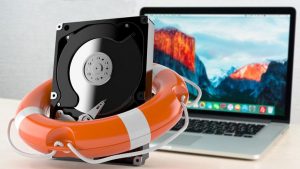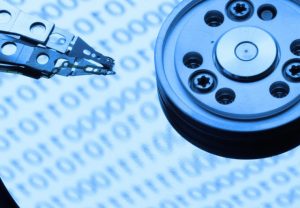|
One of the best things you can do to maintain or improve the performance of any computer is keeping your hard drive in tip-top shape. When things go wrong, the source of the problem is often in the hard drive. Here are some of the most common tasks that must be done with hard drives, plus some nifty (and free) software utilities that make getting them done a breeze… |
Tune Up Your Hard Drive With Free Software
Clean-up of unnecessary files and folders helps to keep your Master File Table nice and lean; with fewer files and folders to index, it’s easier for the system to find what it needs at any given moment. File inventory reporting utilities such as JDiskReport can find duplicate files so one can be deleted, or sort files in order of size to help you figure out where all that disk space is going. I use JDiskReport several times a year, and I always find gobs of files that can be deleted. Backups will also be faster if unnecessary files are eliminated. Another option is WinDirStat, if you prefer a tool that’s not Java-based.
Optionally, clean-up can include deleting traces of your computing and online activity to preserve your privacy. In Windows, “recent files” history lists are kept by default, and every Web browser maintains histories of the URLs you have visited. If your computer is shared or you’re worried about spies, enabling this clean-up option will cover your tracks. Privazer is my favorite utility for clean-up and privacy purposes; it leaves a computer running like it’s fresh out of the box.
If you want to get rid of everything on a drive, in order to donate, sell, or safely dispose of it, try Eraser, a free utility for securely erasing data from a Windows hard drive. It works with all versions of Windows, from Windows 95 through Windows 10. Eraser has a simple name but it erases files completely in several complex ways. It’s a good alternative to using a 16-lb steel sledge hammer and a drill (both of which I have gleefully employed on occasion).
Defragmenting (defragging) and file optimization are related functions that keep data on your hard drive physically organized for the most efficient reading and writing. Generally, the less distance the drive’s read/write head has to move, the faster data will be read and written. Optimization finds the pieces of fragmented files on your hard drive, re-assembles them, and places the most frequently used files in places where they can be more efficiently accessed.
Windows Vista, 7, 8 and 10 include a defragger which runs automatically. But word on the street is that it’s not exactly best of breed. I recommend Defraggler from Piriform, which can defrag entire hard drives, individual files and folders, or the free space on your drive. Defraggler will report on the health of your hard drive, and is SSD-compatible.
t’s been widely reported that SSDs (solid state drives) should not be defragged, because they do not have mechanical moving parts accessing files on a spinning magnetic platter. The concern was that SSDs may wear out due to the high level of write activity that defrag operations require. However, Windows 8 and 10 both perform defrags on SSDs, and my understanding is that modern SSDs are not prone to wearing out like some older models did.
Data Recovery and Other Utilities
So-called “undelete” utilities can find and restore files even after the Recycle Bin has been emptied, or recover usable parts of files that have been partially overwritten. Undeletion is a simple example of “data recovery,” a term reserved for major catastrophes such as a hard drive that will not boot, or even one that has suffered physical damage. Recuva can find and undelete files on hard drives, SD cards, MP3 players, and other devices.
TestDisk is an open-source partition recovery tool intended for situations where a drive cannot be booted. Testdisk saved my bacon once when other tools reported zero files on my C: drive. It scanned the disk, found the partitions and file access table, and patched things back together.
Catching minor read/write errors and “weak spots” on a hard drive before they turn into major disasters is the province of error-checking and testing software. Early warnings of such flaws include a hard drive the “takes forever” to open or close a file, and an unusually hard-working cooling fan that is trying to chill the drive motor. HD Tune is a free utility that checks for errors, measures drive performance, securely erases data, and much more. There’s also a paid Pro version that does more extensive testing. HD Tune has been updated for Windows 10.
For a quick look at your hard drive’s S.M.A.R.T. (Self-Monitoring And Reporting Technology) status, try the free Speccy utility. In the Hard Drives section of the Speccy results, you’ll see some technical gibberish under the S.M.A.R.T heading. If it says “Status: Good” at the bottom, that’s about all you need to know. The only other info there you might want to check out is the Reallocated Sectors Count. If that’s greater than zero, you may have some defective sectors on your hard drive.
A good benchmark utility can tell you how well your drive performs compared to its factory specs, or even against drives of identical make and model in use on other computers worldwide. Running benchmarks before and after maintenance chores can show how well a maintenance tool does its job. Novabench has been the leading free benchmark package since 2007.
Dividing one physical drive into two or more logical drives (denoted by letters, i. e. C:, D:, etc.) is called drive partitioning. One use for partitions is to install all of your application software on one partition and use the other to hold ever-changing data. Some users swear by this approach, but I find it simpler to put everything in one large partition. Of course, there’s an exception. If you want to run two different operating systems on one computer, each will need its own drive partition. Paragon Partition Manager Free is a well-established, reliable partitioning tool.
Disk cloning is the process of making an exact, bit-by-bit copy of everything on a hard drive, including hidden system files, boot records, and all else. You should be able to swap a cloned drive for its original and never see any difference. Cloning is a straightforward backup strategy used by many home and business users. Macrium Reflect Free is a popular cloning utility. It also does disk imaging, which stores the entire or selected contents of a disk in a compressed file that cannot be booted, as a cloned drive can, but is easier to maintain for incremental backups.
How many of these tools have you used? Do you have an alternative you like?
Have a great week from all of us on the ZI Staff.
